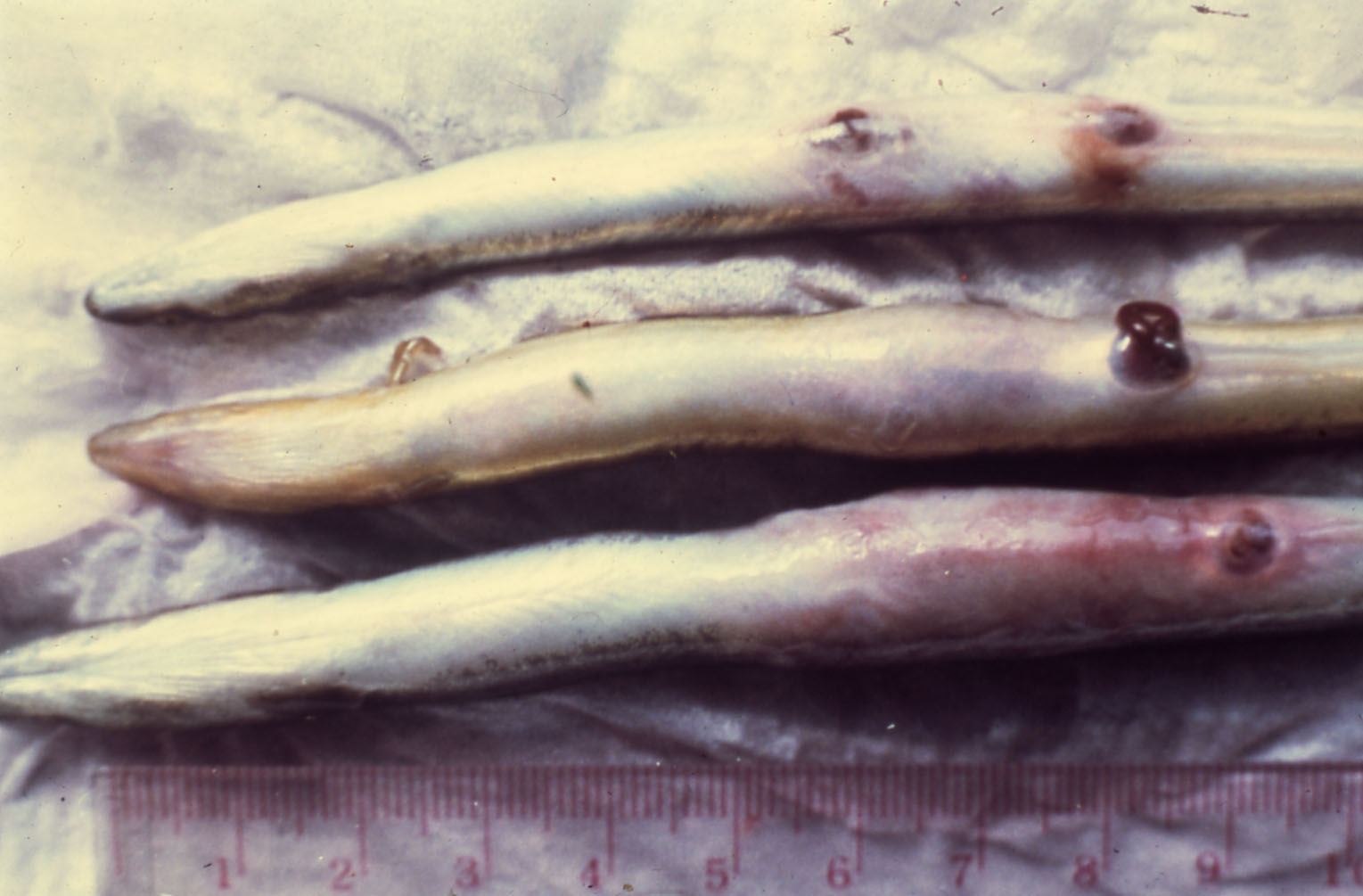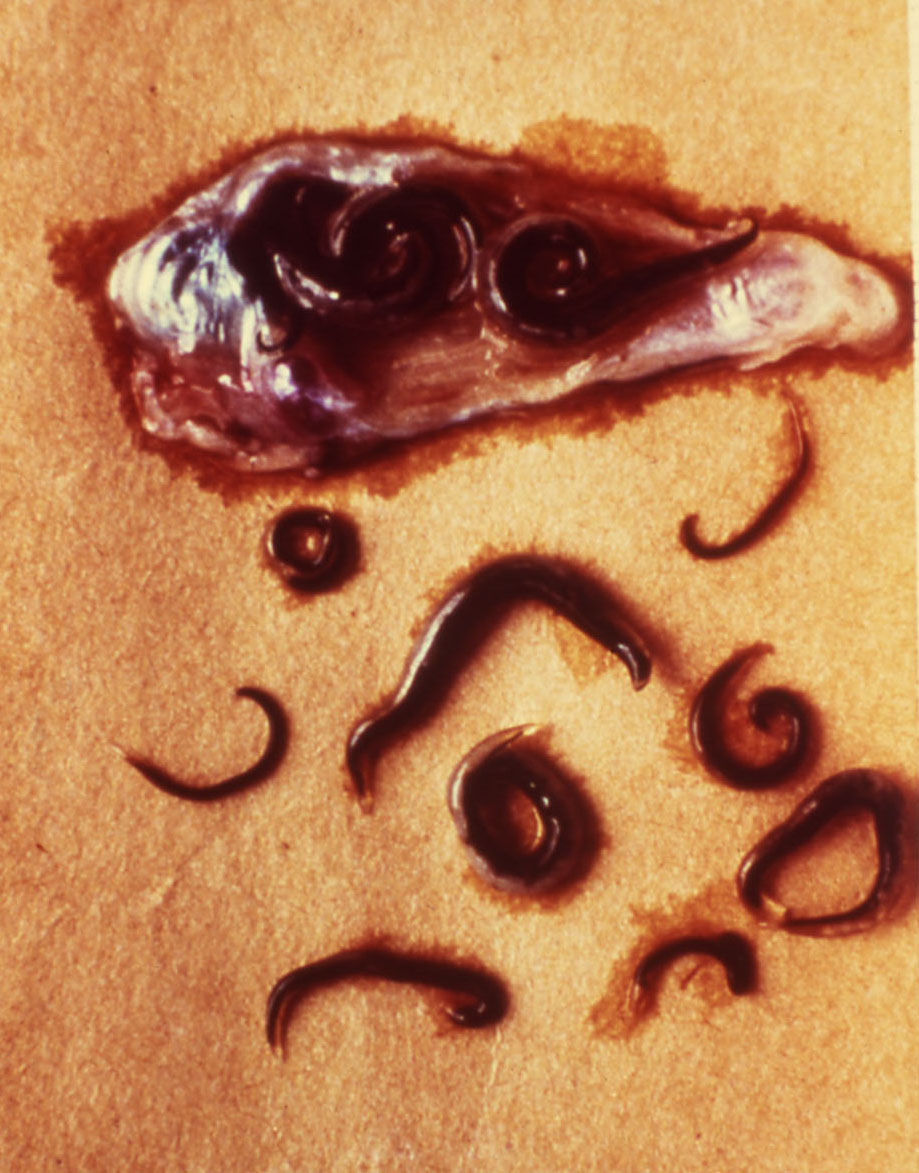
| Parasite | Anguillicoloides crassus |
|---|---|
| Taxonomy | Nematoda, Secernentea, Spirurida, Camallanata |
| Hosts | Japanese eel (Anguilla japonica), European eel (Anguilla anguilla) |
| Infection site | Swimbladder |
| Clinical signs | No external signs are observed in Japanese eel. Anguillicoloides crassus is found in the swimbladder. The lumen of swimbradder in European eel is filled with the parasites, resulting in swelling of the swimbladder and abdominal distension caused by inflammation (Fig. 1). |
| Parasitology | An adult (female 4-7 cm; male 2-6 cm) is brownish-red in color (Fig. 2). Hatched larvae in the lumen of the swimbladder are passed out through the pneumatic duct of the eel and shed into water via the intestine. They are ingested by the intermediate host such as cyclopoid copepods and become the third larval stage, which infect the fish (Hirose et al., 1976). Moravec (2006) transferred this parasite from the genus Anguillicola to Anguillicoloides. |
| Pathology | No serious pathological changes are observed in Japanese eel, while circulatory disorders of the visceral organs occur in European eel due to compression of the swollen swimbladder. Degeneration of the adult parasites induces inflammation, resulting in granuloma. The degenerated parasites are transported to the digestive tract, causing enteritis. |
| Health hazard | Since this parasite is not infectious to human, it is harmless in food hygiene. |
| Diagnosis | Observe the morphology of the parasite in the swimbladder. Anguillicoloides crassus can be differentiated from A. globiceps by its dissimilarities in morphology of the cephalic region and oesophagos. |
| Other information | It is considered that Anguillicoloides crassus is highly pathogenic to European eel because the parasite is not indigenous in Europe (Ogawa, 2004). |
| References | Hirose, H., T. Sekino and S. Egusa (1976): Notes on the egg deposition,
larval migration and intermediate host of the nematode Anguillicola crassa parasitic in the
swimbladder of eels. Fish Pathol., 11, 27-31.
Moravec, F. (2006): ‘Doranculoid and Anguillicoloid Nematodes Parasitic in Vertebrates’, Academia, Prague, 634p. Ogawa, K. (2004): Metazoan diseases. Infectious and parasitic diseases of fish and shellfish. (ed. by Wakabayashi, H. and K. Muroga), Koseisha Koseikaku, pp.381-405. |

Fig. 1. European eel showing the enteritis caused by A. crassus.

Fig 2.. Numerous worms from European eel